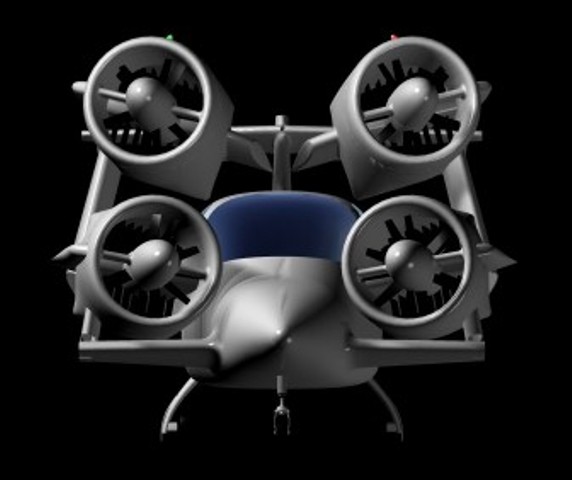

With its four engine nacelles dominating the exterior of the vehicle, the M800X appears to be either one of those high priced and heavily overpowered vehicles ready by reason of its shape and available horsepower to leave the road at the touch of a throttle, or an exotic looking kit-car build on a modified VW chassis lacking sufficient power to properly merge onto the freeway. Closer examination of the vehicle reveals what appear to be functional control surfaces on both vertical risers and the rear spoiler, suggesting that three wheels supporting the vehicle might not need to maintain contact with the ground to control the vehicle. The aircraft lighting and DOT marker lights, registration number on the tail, and an international motorcycle license plate displayed at the rear suggest attention to detail that either marks the vehicle as the genuine article or a very convincing prop parked in the garage to freak out the neighbors.
Closer examination reveals two means of readily accessing the cabin. The retracting canopy stands open, providing access to the seating area from above. The rear hatch opens downward to make a ramp for easy cargo access and patient handling.
While not tall enough to stand in, the cabin has room enough to load two stretchers and compact life support equipment with the four rear seats folded flat, a medical crew of two attendants, plus the pilot and copilot. Folding the right or left two rear seats flat provides space to load one stretcher without sacrificing all passenger seating. Universal medical attachment points for oxygen and life support power have been placed at the head and foot of each stretcher station to allow for loading patient either head or feet first. With jump seats folded down and the stretchers stowed, the craft may carry up to 8, distinguishing it from the M600, M400, and M150 models.
In the front seats, the instrument panel seems far less complicated than a typical aircraft pilot interface. The indicators consist of four screens and five round dials, all presently darkened. Two sticks, one with a t-handle, the other with a round knob, provide the only visible means to control speed and direction, and the twelve button touchpad looks as if it would be more at home on a telephone than on the floor console between the seats.
Oddly enough, no radio or speakers can be seen. Also absent are the MP3 player, CD player, tape player, or even a jack for microphone or headsets.
A military style data plate indicates the eight multi-fuel axial vector engines provide a two-minute rating of 2000 horsepower. Fuels listed include AVGAS, MOGAS, ethanol, ethanol-85, alcohol, kerosene, diesel. bio-diesel, JP-4, JP-8, SVO, and WVO. Physical dimensions listed are 7.5 feet high, 8.5 feet wide, 27.5 feet long, 40 foot diameter take-off and landing area, 2400 pound dry vehicle weight, load capacity of six adults or up to1500 pounds. The performance specifications indicate the maximum groundspeed as 65 mph, operational ceiling as 36000 feet, maximum airspeed as 400 knots at 13,600 feet, cruising airspeed as 300 knots at 20,000 feet, maximum rate of climb as 6000 feet per second, fuel consumption rate as 80 pounds (10 gallons) per hour or 30 MPG at 300 knots, fuel capacity as 50 gallons plus a 10 gallon reserve, cruising range of 1500 miles, and an exterior noise level rated at 86 decibels at the perimeter of the take-off area. (For comparison, slightly louder than a telephone dial tone, and approximately the same noise level as city traffic from inside a car.)
You may continue looking at vehicles or quit